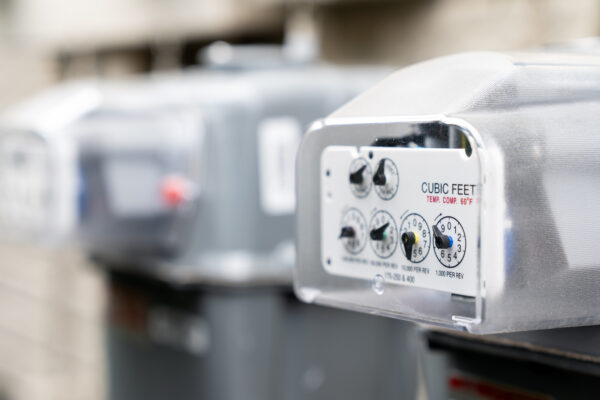The energy sector is evolving away from traditional power generation and distribution. This transition has been escalating over the last decade. While traditionally, all grid-tied systems have been located in front of the meter, an increasing number of new systems are behind the meter.
Many experts predict that the future of energy and power generation, including hydrogen generation, will be behind the meter as more individuals start taking control of both usage and production.
In this article, we will explore what hydrogen generation behind the meter means. Specifically, the fundamental difference when compared to generation in front of the meter.
Behind The Meter Power and Hydrogen Generation
The significant difference between behind the meter (BTM) and in front of the meter all comes down to the location of a building’s utility meter.
For instance, a BTM system that provides power to a home does not pass electricity through the meter that connects the home to the electrical grid. Instead, the BTM system takes power generated at home (ex: roof-top solar) and delivers the electricity directly to the house without interacting with the electrical grid. The National Renewable Energy Laboratory created this presentation about behind-the-meter projects.
A BTM system provides energy directly to a business or home without passing through an electric meter or having anything to do with the electric grid. If the electricity or even gas has to pass through your meter to enter your home or place of business, it is classified as an “in front of the meter” system.
Traditionally, there has always been a utility company that provides gas or power in front of the meter and charges each month for it.
At present, there are various types of BTM energy systems. Some of the most common include:
On-site renewable energy power generation
Any energy generated on your property is classified as behind the meter. The same goes for on-site hydrogen gas generation.
Generally, BTM systems will include solar panels, wind turbines, battery systems, and gas-powered generators, which could soon be converted to hydrogen-powered generators.
The power generated by these generators can be used for electricity at home or to power businesses.
Most interestingly, the excess electricity generated by wind and solar behind the meter can be turned around and dispatched out to the meter and sold directly to the power utility company. This is then adjusted via your electricity bill, also known as net metering.
On-site Energy Storage Systems
Currently, these storage systems usually take the form of batteries that store energy during periods of low-cost grid-supplied electricity, then release the power during expensive periods of limited electricity supply. This is known as peak shaving.
Since these Energy Storage Systems provide power and sit between the meter and the house, they are referred to as a BTM systems. We could see low-cost batteries replacing expensive Tesla Power Walls in the future. These cells would power the home, and homeowners would sell the excess power to the utility company.
Microgrids
Microgrids are a more complex type of BTM energy system. These are often smaller versions of their larger counterparts and are used to power a small building or a few small buildings. The grids comprise a power generation, transmission, and battery storage system.
All the systems exist behind the meter, which means users don’t consume electricity provided by the utility company.
Microgrids of the future could rely on on-site methane pyrolysis to generate clean hydrogen for emission-free power generation. This hydrogen generation approach is very environmentally friendly.

